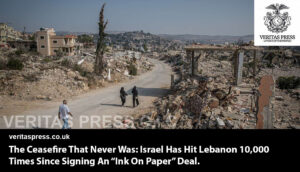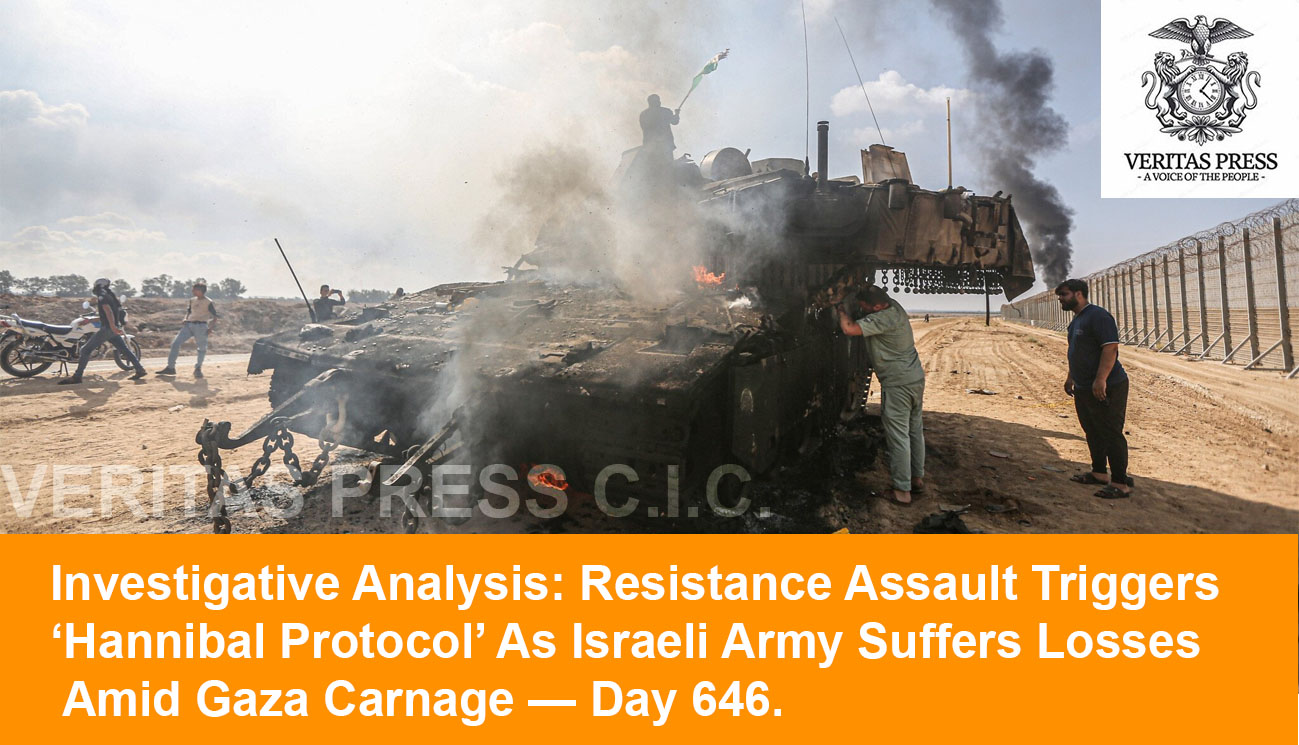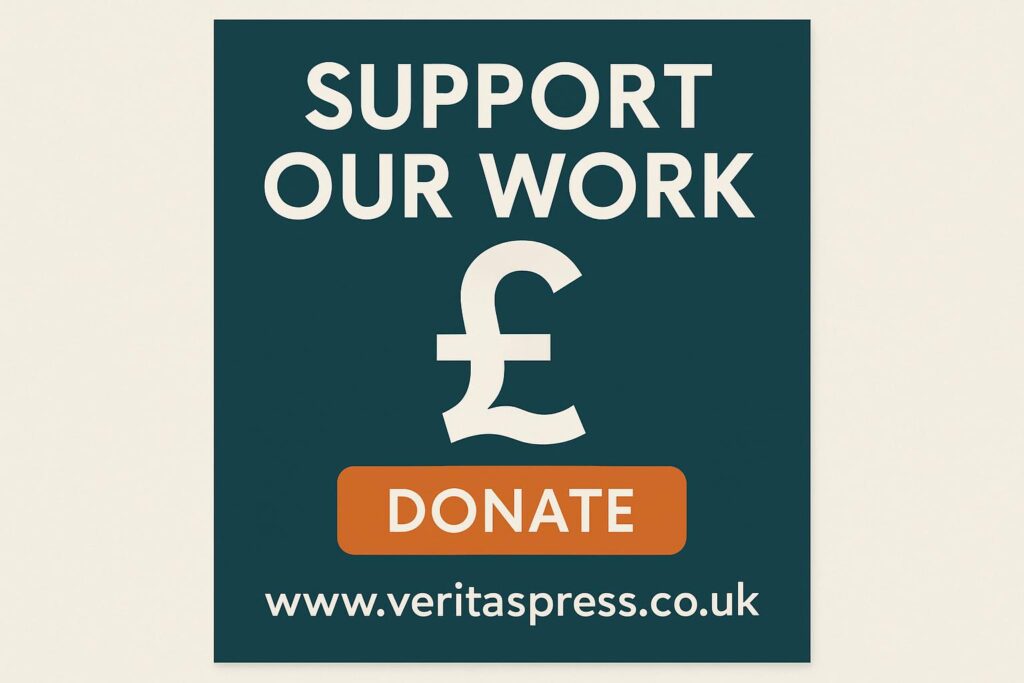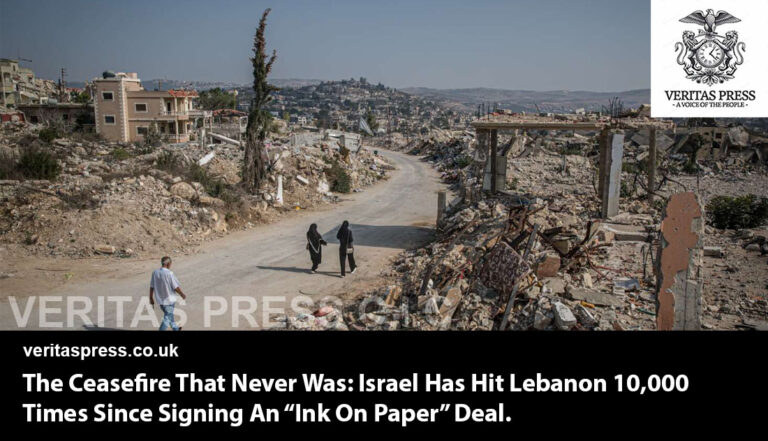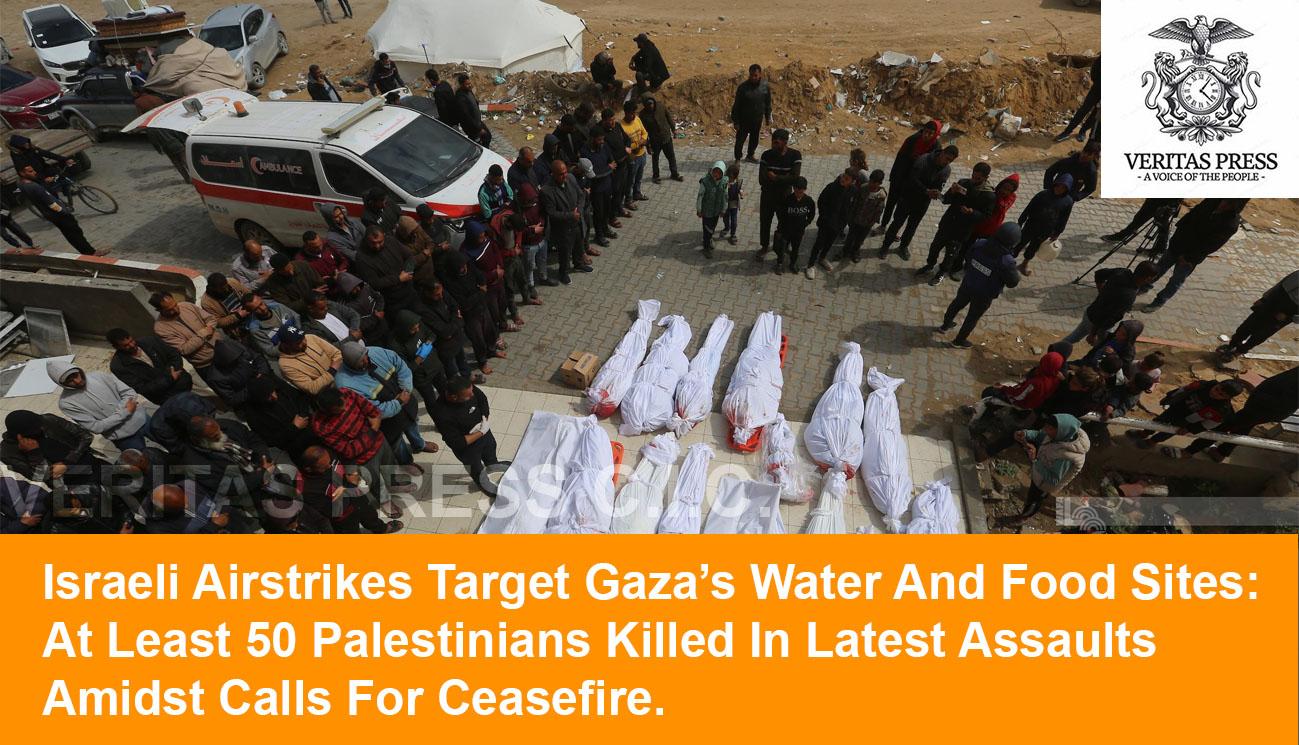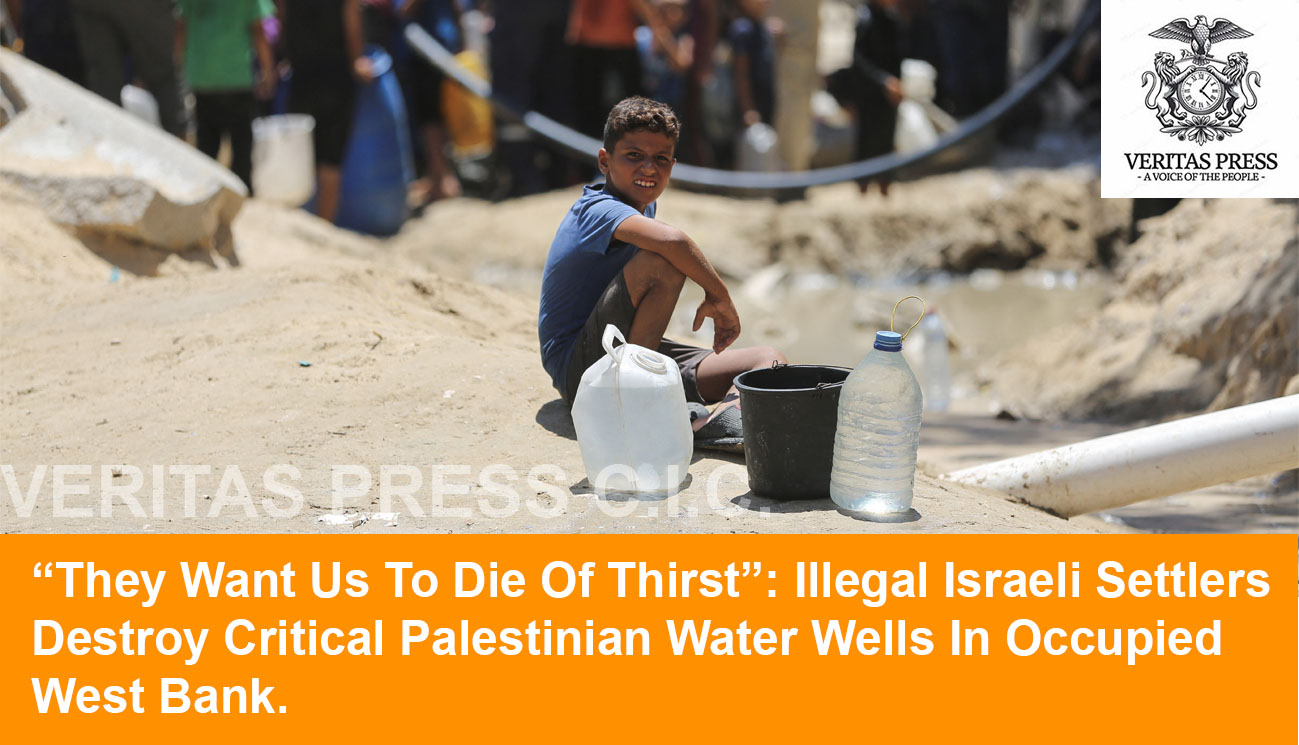Gaza – In what may mark a turning point in Israel’s protracted and brutal war on Gaza, fierce clashes erupted across the besieged enclave on Monday as Palestinian resistance factions launched coordinated attacks against Israeli occupation forces. Israeli media confirmed a soldier was killed and three others seriously wounded in the eastern Gaza Strip, casualties that triggered the activation of the notorious “Hannibal Protocol,” a shoot-to-kill directive employed to prevent the capture of Israeli soldiers, even at the cost of their lives.
But behind this dramatic military development lies a far deeper and more disturbing reality: a war spiralling into ever more desperate violence, the collapse of international legal norms, and a devastating human toll that continues to mount largely unchecked.
“We saw the helicopters land under heavy smoke. The explosions were non-stop. Then the tanks fired at buildings without warning,” said Majed Abu Hasna, a resident of the Al-Tuffah neighbourhood who fled with his family during the bombardment. “We don’t know how many people were killed. Our streets are graves.”
Coordinated Resistance And An Army On Edge:
According to both Israeli and Palestinian reports, the Al-Qassam Brigades, the armed wing of Hamas, launched simultaneous operations in Gaza City’s Al-Tuffah and Shuja’iyya neighbourhoods as well as in the southern city of Khan Yunis. In a bold and risky manoeuvre, resistance fighters reportedly tried to capture an Israeli soldier during a complex ambush, prompting the army’s immediate activation of the Hannibal Directive.
Israeli news outlet Yedioth Ahronoth described the situation as a “new disaster,” while Channel 13 reported “difficult and complex fighting” that had persisted for hours. The Israeli military admitted the death of one soldier and the evacuation of several others via helicopter from inside the Strip, an operation accompanied by intense artillery shelling, aerial strikes, and smoke bombs.
Palestinian media, including Shehab News Agency and Al-Aqsa TV, documented the widespread destruction, noting that entire blocks in Shuja’iyya and Al-Tuffah were levelled during the Israeli response. The use of the Hannibal Protocol, which essentially licenses mass bombardment to prevent soldier capture, has come under renewed scrutiny.
“This protocol is nothing short of state-sanctioned murder,” said Sarah Leah Whitson, executive director of Democracy for the Arab World Now (DAWN). “It treats both the soldier and surrounding civilians as expendable. Its activation reflects Israel’s prioritisation of military optics over human life.”
Hannibal Protocol: A Doctrine Of Collateral Carnage.
The Hannibal Directive, first exposed in the 1990s, permits Israeli forces to unleash overwhelming firepower in the event of a suspected abduction. It was last controversially invoked during the 2014 war in Rafah, resulting in over 135 Palestinian civilian deaths in a single day, many of them children.
On Monday, a similar pattern played out. Gaza health officials reported at least 28 Palestinians killed since dawn, including women and children in Jabalia, Shuja’iyya, and Khan Yunis. Gaza’s Ministry of Health confirmed that since October 7, 2023, more than 100,000 Palestinians have been killed, with another 377,000 wounded, many maimed for life. Over 14,000 are still missing, presumed dead under the rubble.
“The use of the Hannibal Protocol is yet another war crime in a long line of atrocities committed by the Israeli military in Gaza,” said Omar Shakir, Israel and Palestine Director at Human Rights Watch. “This war has erased any pretence of proportionality or civilian protection.”
Resistance Resurgence On Symbolic Anniversary:
The operation comes one year after Israel’s targeted assassination of Mohammed al-Deif, the revered commander of Hamas’ military wing. In a fiery anniversary address, Abu Obeida, spokesperson for the Al-Qassam Brigades, vowed that Israeli forces would “bleed daily” in Gaza.
“Our leadership was never decapitated. Al-Deif’s blood has only strengthened our resolve,” he said in a broadcast circulated by Al-Aqsa TV. “The occupier will pay for every massacre committed against our people.”
Israeli casualties have been mounting. According to Haaretz, at least 890 Israeli soldiers have been killed and over 6,000 wounded, figures disputed by independent observers who suggest actual losses may be higher. Just last week, five soldiers from the Netzah Yehuda battalion were killed in northern Gaza, marking one of the deadliest days for Israeli forces since early June.
“The situation is out of control,” one anonymous IDF officer told Israel Hayom. “The resistance is everywhere. We clear an area, and within 24 hours they’re back, attacking again, often from tunnels we missed.”
A War On Civilians Disguised As A Military Campaign:
Behind the battlefield narrative, a darker truth persists: Israel’s campaign is increasingly seen by human rights experts, UN officials, and legal scholars as genocidal in nature.
“We’re not witnessing just military operations, we are seeing the systematic destruction of an entire population,” said Francesca Albanese, UN Special Rapporteur on the occupied Palestinian territories. “From starvation to mass killings, forced displacement to infrastructure collapse, these are elements of a genocide in motion.”
The figures are staggering. An estimated 196,000 Palestinians have been killed or wounded, hundreds of thousands displaced, and over 80% of Gaza’s population faces food insecurity. Entire families have been wiped out. Hospitals are overwhelmed. International aid agencies, including Doctors Without Borders (MSF) and UNRWA, have accused Israel of deliberately targeting aid convoys and humanitarian infrastructure.
“The destruction is total,” said Dr. Yasmine Al-Sahli, a field surgeon at Al-Ahli Hospital. “We have no medicine, no fuel, no food. We’re amputating children without anaesthesia.”
Despite mounting global outrage, the U.S. and EU continue to arm and defend Israel diplomatically. American contractors and logistics firms now work openly in Gaza’s aid corridors, blurring the line between relief and military intelligence.
Silence And Complicity From The International Community:
Calls for accountability have largely been ignored. The International Criminal Court has yet to issue indictments. UN Security Council resolutions have been vetoed or watered down. Regional powers like Egypt and Jordan have tightened border controls, trapping Gazans in a death zone.
Meanwhile, Israel continues to frame its war as a fight against terrorism.
“The irony is grotesque,” said Gideon Levy, columnist for Haaretz. “We’re bombing shelters, bakeries, ambulances, and then acting surprised when resistance fighters retaliate. Who wouldn’t resist in their place?”
Conclusion: A Catastrophe by Design
What unfolded in Gaza this week is not just another battlefront incident; it is the latest chapter in a systematic and calculated policy of collective punishment. The activation of the Hannibal Protocol, a procedure that prioritises the military’s preference for dead soldiers over captured ones, even at the cost of civilian lives, underscores the Israeli military’s willingness to unleash overwhelming, indiscriminate violence in urban population centres, under the guise of operational necessity.
“This is not a defensive manoeuvre; it’s a scorched-earth doctrine designed to instil terror and erase resistance at any cost,” said Dr. Tarek Loubani, a Canadian-Palestinian emergency physician who has worked in Gaza. “The fact that it is policy, not panic, should alarm the entire international community.”
Human rights groups, including Al-Haq and Euro-Med Human Rights Monitor, have condemned the Hannibal Directive as a potential war crime in past operations. “It encourages violations of international humanitarian law by legitimising attacks on civilian areas to avoid the political consequences of a captured soldier,” said Rania Muhareb, legal researcher and policy fellow at the Irish Centre for Human Rights.
More than 100 Palestinians were reportedly killed in Gaza in a single day amid these “security incidents,” the majority of them women and children. This adds to the staggering toll of over 100,000 Palestinians killed and 377,000 wounded since October 7, 2023, according to Gaza’s Ministry of Health, a number unmatched in modern conflict zones and increasingly labelled a genocide by legal scholars and human rights experts.
Meanwhile, Israel continues to receive unwavering diplomatic and military backing from the United States and European allies. Despite mounting documentation of atrocities, including starvation, forced displacement, and attacks on hospitals and shelters, no sanctions have been imposed. The cost is borne by Gaza’s civilians, now trapped in an unlivable wasteland, subjected to total war under the pretext of security.
“The real horror is not just in the missiles or the massacres,” said Palestinian analyst Noura Erakat, “but in the normalisation of mass death as a strategy. The message from Israel is clear: We would rather destroy an entire neighbourhood than let a soldier be taken alive.”
As resistance operations escalate and Israeli battlefield losses grow, the occupation appears more desperate, more violent, and more exposed. The events of Day 646 are not anomalies. They are a window into the logic of a military campaign that, in the words of former Israeli soldiers from Breaking the Silence, sees Palestinian life not as collateral, but expendable by design.


